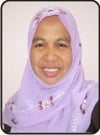Solution to the Political Problem of Bangsamoro: Maguindanaon Professionals and Employees Association Perspective
Abstract
ABSTRACT: This study aimed to get the perspective of the Moro people in the Philippines islands, specifically members of MAPEA (Maguindanaon Professionals and Employees Association), on the belief that this sector could give an educated, intelligent, and strategic formula for the just, peaceful, and lasting solution to the political problem of the “Bangsamoro” people for self determination. In this study, an explanation based on the historical perspectives is necessity. It is to gather the answer of critical question, especially related to what are the root causes of the “Bangsamoro” political problem. Accordingly, the Philippine history is replete with many stories of rebellion and secession. In Mindanao alone, the government has been spending time, efforts, and resources to contend the armed movements. Besides, the “Bangsamoro” struggle for independence has started from 16th to 20th century. In 1968, after the Jabidah Massacre, MNLF (Moro National Liberation Front) fought against the government forces and the violent armed confrontations ended up in the peace talk in Tripoli, Libya in 1975. When in 1996, the GRP (Government of the Republic of Philippine) — MNLF Final Peace Agreement was forged, the MILF (Moro Islamic Liberation Front) continued the struggle so that the All-Out War declared by the Estrada administration in year 2000. Finally, the perspective of the members of MAPEA does not differ from what have already been done to solve the “Bangsamoro” political problem. Just like other organizations, they are hopeful that the conflict would end. This is a new learning.
Key words: Moro people, historical perspective, self-determination, political problem and solution, and the perspective of MAPEA members.

About the Author: Annierah M. Usop is a Ph.D. Student of the Philippine with major in Political Science at the School of Social Sciences and Humanities USM (Science University of Malaysia), 11800 Minden, Pulau Pinang, Malaysia. She can be reached at: asiyyahusop@yahoo.com
How to cite this article? Usop, Annierah M. (2012). “Solution to the Political Problem of Bangsamoro: Maguindanaon Professionals and Employees Association Perspective” in SOSIOHUMANIKA: Jurnal Pendidikan Sains Sosial dan Kemanusiaan, Vol.5, No.1 [Mei], pp.123-134. Bandung, Indonesia: Minda Masagi Press owned by ASPENSI, ISSN 1979-0112.
Chronicle of article: Accepted (March 15, 2012); Revised (April 20, 2012); and Published (May 20, 2012).
Full Text:
PDFReferences
ADB [Asian Development Bank]. (2005). Poverty in the Philippines. Asia: ADB Publishing Department.
Bacani, Benedicto. (2006). “The Mindanao Peace Process” in Autonomy and Peace Review, Vol.2, No.1 [January-March].
Batino, Clariza. (2007). “War Damages” in Bantaaw, Vol.5, No.4 [Series Issue].
Cantallopez, E. (2010). “Armed Conflicts Defacing and Reshaping Communities: The Case of Aleosan, North Cotabato”. Unpublished Doctoral Dissertation. Cotabato City: Graduate School, Notre Dame University.
Cerezo, C. (2010). “Contributions of the Peace and Development Advocates in the Implementation of the 1996 Final Peace Agreement”. Unpublished Masteral Thesis. Cotabato City: Graduate School, Notre Dame University.
Daylusan-Fiesta, M. (2004). “Impact of Armed Conflict: Coping Mechanisms of Women and Children of Pagangan, Aleosan, North Cotabato”. Unpublished Doctoral Dissertation. Cotabato City: Notre Dame University.
Galtung, Johan. (1995). “Peace and Conflict Studies” in International Peace Journal, Vol. 2, No.1 [June].
Gaspar, L. & Maravillas. (2002). Mapagpakamalinawon. Davao City: Alternative Forum for Research in Mindanao.
http://www.time.com/time/world/article/0,8599,1943191,00.html#ixzz1g1BAFSMl [accessed in Pulau Pinang, Malaysia: 11 March 2012].
http://www.pbs.org/newsletter/bb/asia/east_timor/index.html [accessed in Pulau Pinang, Malaysia: 11 March 2012].
http://www.amnesty.org/armed_conflicts [accessed in Pulau Pinang, Malaysia: 11 March 2012].
Iribani, A. (2006). Give Peace a Chance. Mandaluyong City: Magbasa Kita Foundation.
Jubair, S. (2008). The Long Road to Peace. Cotabato City: Magbasa Kita Foundation.
Kadil, B. (2002). History of the Moro and Indigenous People in Minsupala. Marawi City: Mindanao State University.
Lingga, Abhoud Syed. (2009). “Conflict in Mindanao: Root Causes and Status”. Paper presented in Thailand, 16-17 January.
Macapantar, N. (2010). “Building Peace Communities: The Iranun Experience”. Unpublished Doctoral Dissertation. Cotabato City: Notre Dame University.
Majul, C. (1999). Muslims in the Philippines. Quezon City: University of the Philippines Press.
Martin, C. (1996). Retreat and the Regions. London: Jessica Kinsley Publication.
Mua, M. (2010). “The Armed Conflict in Maguindano: Its Social and Economic Consequences to the Internally Displaced Persons (IDPs) in Datu Piang, Maguindanao”. Unpublished Doctoral Dissertation. Cotabato City: Notre Dame University.
Musib M. Buat, Mohd. (2007). “The Right to Self-Determination: Impact and Implications on the Mindanao Peace Process” in Autonomy and Peace Review, Vol.3, No.1 [January-March]. This journal is a quarterly publication of the Institute for Autonomy and Governance.
Pangcoga, T. (2009). “Role of the Civil Society” in Bangsamoro Updates: A Monthly Newsletter of the Consortium of Bangsamoro Civil Society, January Issue.
Ricklefs, M.C. (2004). Sejarah Indonesia Modern. Yogyakarta: Serambi Indonesia, Translation.
Rodil, B.R. (1994). Minoritization of the Indigenous People in the Philippines. Davao City: Alternative Forum for Research in Mindanao.
Rodil, B.R. (2000). Kalinaw Mindano. Davao City: Alternative Forum for Research in Mindanao.
Santos Jr., S. (2000). Development of the Government’s Peace Program in the Media and Peace Reporting: Perspectives on the Media and Peace Reportage. Pasig City: Office of the Presidential Adviser on the Peace Process.
Santos Jr., S. (2005). The Philippine Peace Process. Pasig City: Office of the Presidential Assistant on the Peace Process.
Wadi, T. (2003). Civilian Peacekeepers: Creating a Safe Environment for Peacebuilding. United Kingdom: Lynne Reinner Publishers.
www.mindanao_peoples_caucus.com [accessed in Pulau Pinang, Malaysia: 15 February 2012].
www.crisiswatch.org [accessed in Pulau Pinang, Malaysia: 15 February 2012].
www.crisisgroup.com [accessed in Pulau Pinang, Malaysia: 15 February 2012].
www.google.com [accessed in Pulau Pinang, Malaysia: 15 February 2012].
www.bangsamoro.com [accessed in Pulau Pinang, Malaysia: 15 February 2012].
SOSIOHUMANIKA: Jurnal Pendidikan Sains Sosial dan Kemanusiaan is published by Minda Masagi Press. This work is licensed under a Creative Commons Attribution-Sharealike 4.0.
